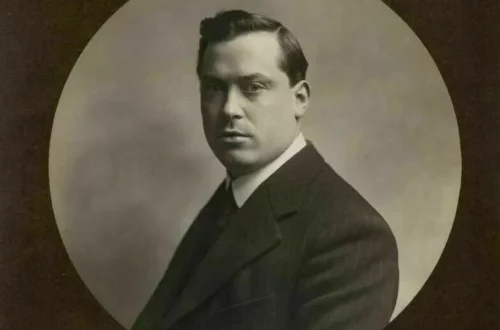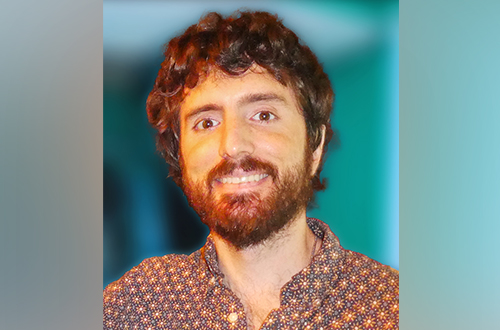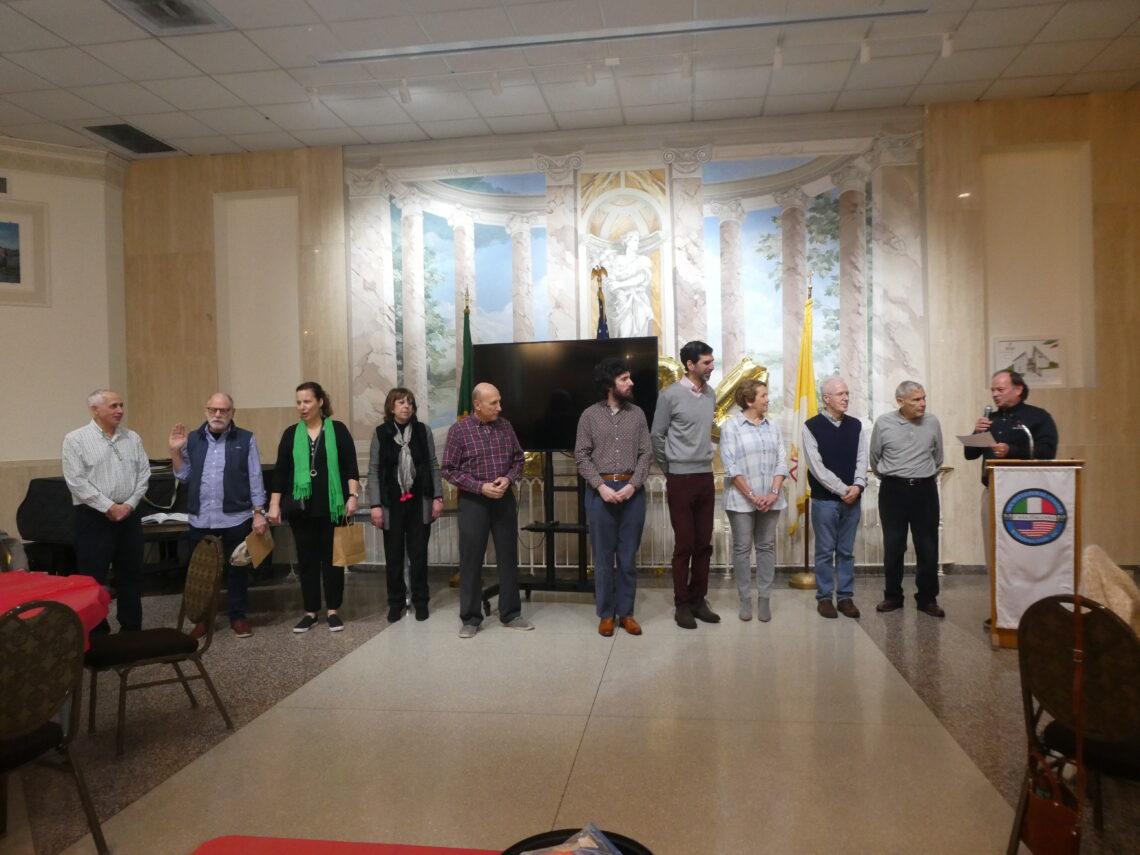
Expert Discusses Evolution of Roman Coins, Officers Installed At First Meeting of 2024
By Nancy DeSanti, 1st Vice President—Programs
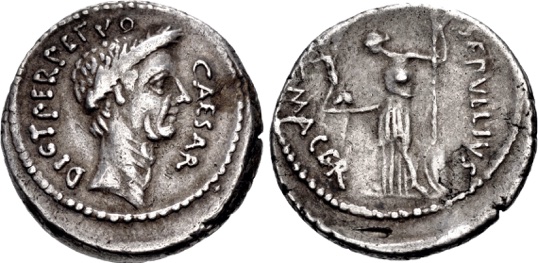
Dating from 44 B.C., this Julius Caesar coin, minted while he was still alive, helped seal the Roman leader’s fate.
Credit: Courtesy of Michael C. Markowitz
For the first AMHS program of the new year, members were treated to a very informative and entertaining talk, “Show Me the Money!” at Casa Italiana on January 28, 2024. The speaker, Michael C. Markowitz, is an expert on Roman coins. He told us all about the evolution of Roman coins from lumps of metal in 300 B.C. to gold Imperial coins by 476 A.D. It was a good way to fight off the winter blues, have a fun afternoon of camaraderie, and get a history lesson, all at the same time.
Mike, who gave us a virtual talk last July, was born in New York City. His mother’s side of the family is Italian (Neapolitan), while his father’s ancestors emigrated from Ukraine to Romania. Mike attended the University of Rochester, then the University of California, Irvine. He worked for many years in the aerospace industry in southern California before moving in 1991 to northern Virginia where he is a senior research specialist for the Center for Naval Analyses.
He is a contributing writer on ancient and medieval coins for CoinWeek.com and a member of the American Numismatic Society and the Ancient Numismatic Society of Washington, D.C. He also serves on the vice president of the Fairfax Coin Club. Mike said that one of his most memorable times was spending an afternoon inside the coin vault of the archaeological museum in Siracusa, Sicily.
As Mike explained, coins were a Greek invention that the Romans borrowed. The gold, silver, and bronze coins resembled the Olympic medals. The process of minting the coins involved a hot furnace, so workers wore caps to keep their hair from catching on fire from sparks. Since most Romans could not read, the symbols on the coins were a form of official communication.
During Rome’s long history, Mike noted, billions of coins were struck in thousands of types, and millions of them survive today. Mike advised anyone interested in collecting Roman coins to “buy the book before you buy the coin,” to avoid getting scammed. He displayed on a nearby table some of his collection of coins and books which he referred to during his talk.
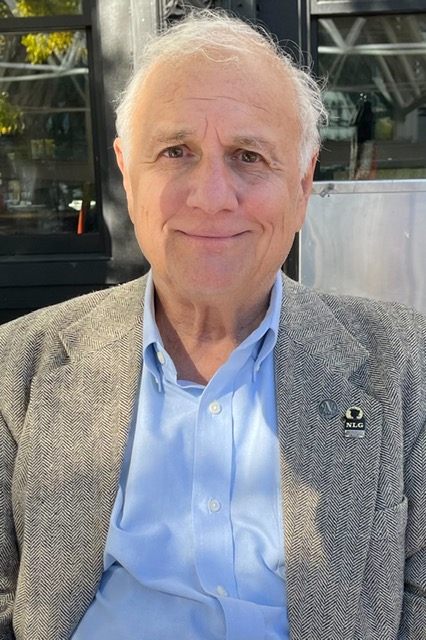
Michael C. Markowitz
He explained how coinage in the Roman economy went through cycles of debasement, inflation, and currency reform.
One of the most interesting coins Mike showed during his Power Point presentation was a Sestertius of Emperor Titus, with its detailed depiction of the Colosseum. It sold for a whopping $409,395 in April 2011.
Interestingly, Roman coin designs influenced classic American coinage. For example, the image on the U.S. winged Liberty dime, which was minted from 1916 to 1945, was sometimes confused with the Roman god Mercury who wore a winged helmet. Hence, the American dime with the winged Liberty head on the front was commonly but erroneously called the Mercury dime.
One fascinating historical fact Mike told us about was the Julius Caesar coin, probably the most famous Roman coin, which got him killed. No living person was ever depicted on Roman coins until Julius Caesar had a coin minted with his profile on the front. However, on the back, the coin had the Latin abbreviation DICT PERPETVO (“dictator in perpetuity”). The coins were minted for less than two months from early February to mid-March, 44 B.C., because Caesar’s brazenness so alarmed some of the conservative senators of the Republic that they assassinated him in the Senate on the Ides of March.
We also learned that one of the principal uses of the coins was to pay the army. Since there were no banks in those days, the payroll master would often put the coins in a terracotta clay pot and bury the clay pot underground in a field or an unused area. Of course, if the payroll master died in battle or from the plague or another disease, the clay pots would remain hidden. So, even recently, these pots filled with coins have been discovered by accident across areas of the former Roman Empire, including Great Britain, Spain, and Italy.
Many thanks to AMHS Secretary Sonny Scafetta for suggesting the speaker, to Maria Marigliano for her technical assistance, to Peter Bell for handling the logistics of organizing the lunch which was catered by A. Litteri, to Julie Finigan Dal Forno for assisting with the raffle, and to all those members who donated prizes and bought tickets.
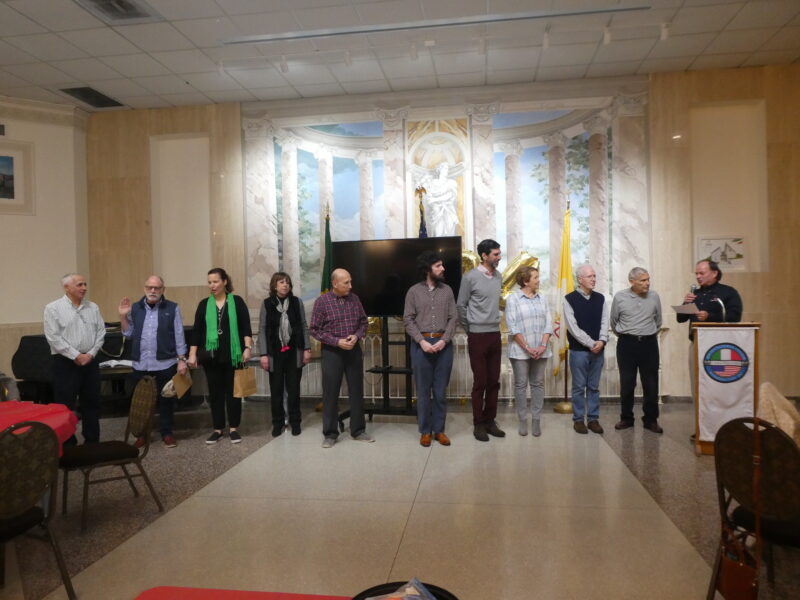
March 2024



